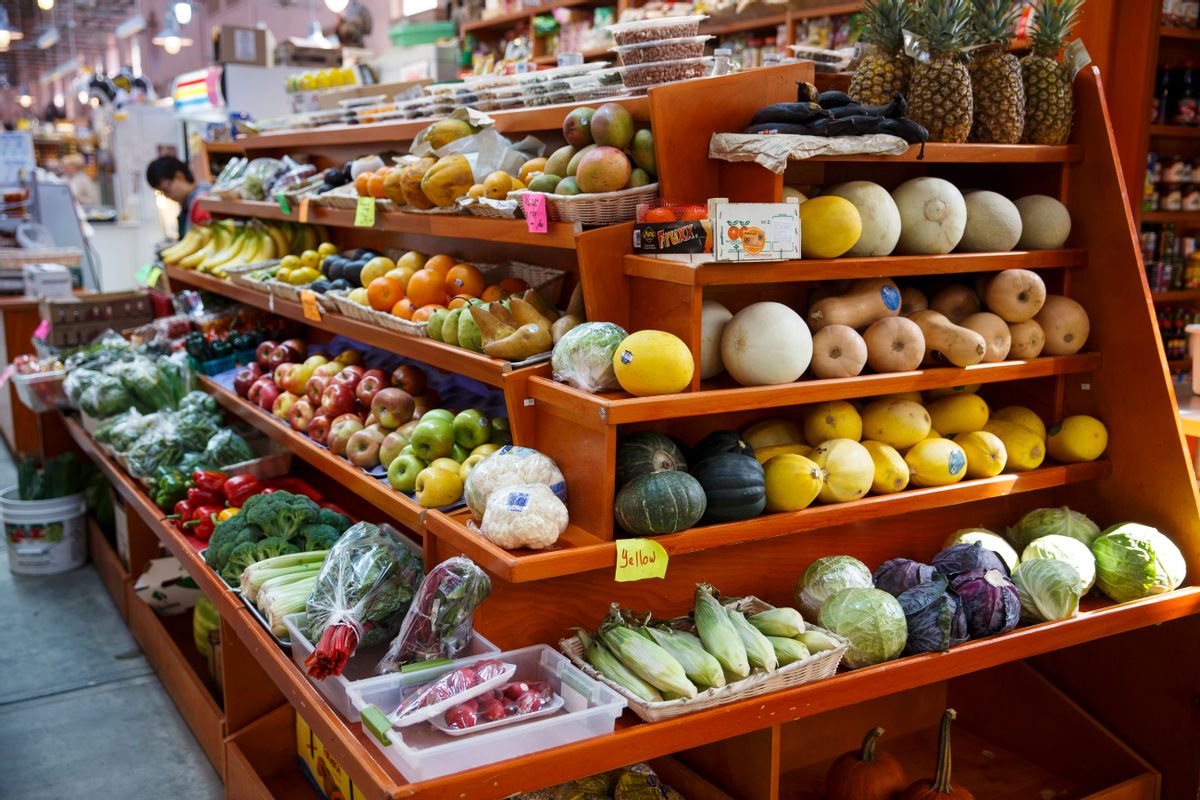While 1 in 8 Americans are considered to be “food insecure,” an estimated 40 percent of the nation’s supply of fruits, vegetables, dairy and meat goes to waste, discarded by farmers, retailers, restaurant owners and households.
Three federal agencies have agreed to work together to cut that food waste in half by 2030.
But a recent government oversight report found that the agencies — the Environmental Protection Agency, the Department of Agriculture and the Food and Drug Administration — have made little headway, despite some initial actions.
The EPA and USDA announced the national goal in 2015, with the FDA joining the effort last year. That was when the three agencies signed a formal, two-year agreement to develop a strategic plan to “increase collaboration and coordination.”
Yet according to the non-partisan Government Accountability Office, the roles of the agencies remain undefined, and their 2030 goal faces widespread challenges. Among the obstacles identified by the GAO were limited data, lack of public awareness and inadequate space and storage capacity in the country to collect and distribute available food.
“According to a USDA official, the agencies do not have plans for how they will continue their interagency collaboration beyond the life of the current (two-year) agreement,” according to the GAO report, released in June.
The issue of food waste, while not new, sparked increased interest nationally with the publication of two reports by the nonprofit Natural Resources Defense Council in 2012 and 2017. While researching sustainability in agriculture, the NRDC discovered that a staggering amount of food was winding up in America’s landfills.
The NRDC researchers learned that fruits, vegetables and meat are lost on farms when they’re never harvested, or during processing when trimmed to remove edible or inedible parts such as skin, pits and bones. Food also is lost in distribution when it is transported and not refrigerated properly, or when a shipment is rejected by a buyer, or a buyer can’t be found.
About 10 percent of the food supply chain is lost in retail, according to the 2012 NRDC report, because a product may not look cosmetically right, or the “sell by” date is either expired or too near its end. Households and food service operations such as restaurants waste the most food, or at least 19 percent in the supply chain.
Through data culled from the National Institutes of Health and other agencies, the NRDC estimated that 40 percent of the food supply went to waste, according to the group’s initial report. In its updated 2017 report, the group calculated that Americans leave between 125 billion and 160 billion pounds of food uneaten.
“Every time a bag of lettuce is tossed aside, much more than spoiled produce goes out the window,” the NRDC stated.
“It’s also a waste of labor, of vehicle miles, of water, of fertilizer. We’re wasting money, trashing resources, and accelerating the changing of our climate.”
NRDC researchers noted that some progress had been made since the release of their 2012 report, especially on the local level, by state governments, some farmers and corporations. But the NRDC’s 2017 report also outlined dozens of recommendations on the national level, including:
- Offering tax credits to farmers to encourage them to donate fruits and produce that can’t be sold to markets. The tax credits will pay the costs of harvesting, washing, sorting, storage, packaging and transportation.
- Standardizing food date labels to a common phrase such as “Best if used by,” then educating the public about what that means, to discourage discarding food prematurely.
- Engaging the public more about food waste, since the largest portion of food is lost in households and restaurants.
In response to the 2017 NRDC report, U.S. Reps. Chellie Pingree (D-Maine) and Rosa DeLauro(D-Connecticut), asked the GAO to find out how federal agencies intended to work together and measure their successes and failures.
Both representatives introduced initiatives to fund programs aimed at food waste reduction under the 2020 Agriculture, Rural Development, FDA, and Related Agencies Appropriations Bill.
In a statement released in June, Pingree praised the GAO report and said it provided a clear road map for the federal government to maintain what she noted was “significant momentum around food waste reduction in the U.S.” She called for more support from Congress.
“We owe it to future generations to reduce as much food waste as possible to prevent further damage to the world we are living in,” she said in her statement.
But DeLauro called for more urgency from the three federal agencies.
“These agencies should take the steps outlined in order to better coordinate their efforts and meet the ambitious 2030 goal,” she said in a statement to FairWarning. “Food loss and waste drive up the cost of food in this country, contributing even further to the problem of food insecurity. That is why the USDA, FDA and EPA need to step up to help stop food loss earlier in the supply chain and educate producers on best practices.”
NRDC senior advocate JoAnne Berkenkamp told FairWarning her organization was encouraged with the efforts being made throughout the federal government.
She also said the latest Farm Bill, signed by President Trump, includes several provisions that will help fight waste, including funding for local governments to develop food waste plans, and ways to donate food to people in need.
“Food waste is a complex issue, and one that will require concerted, cohesive efforts at the federal level,” Berkenkamp said.
Still, it can be done and is being done faster in other countries, NRDC researchers noted in their most recent report.
“Compared with our counterparts around the world, the United States is a little late to the table when it comes to tackling wasted food,” they wrote.




Shares